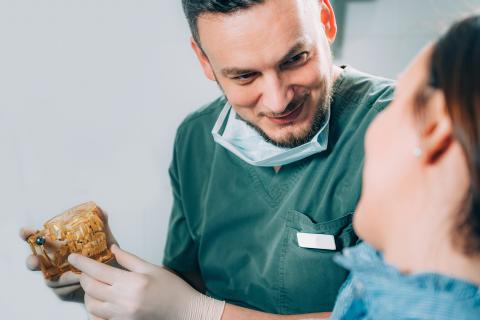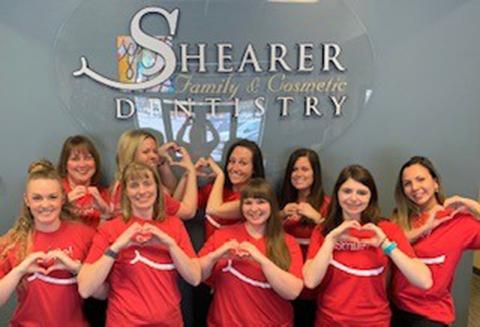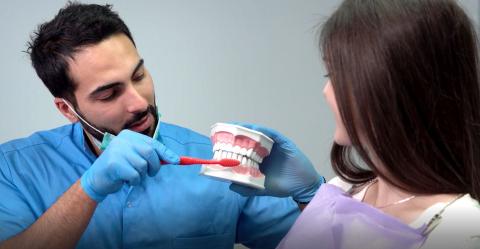Have you ever opened your mouth and heard a clicking or popping sound?
Does your jaw seem to get stuck like it is locked or out of place?
Maybe you have pain in and around your ear, especially when you chew.
Chances are you’re suffering from TMJ Disorder.
The temporomandibular joint (TMJ) is like a sliding hinge that connects your jawbone to your skull. This joint combines the hinge action with sliding motions so that you can eat and talk. The parts of the bones that interact in the joint area are covered with cartilage and are separated by a small shock-absorbing disc which normally keeps the movement smooth.
Think of the difficulties similar to when a car is out of alignment and the shock absorbers don’t work well. It throws off the car function —j
ust like TMJ does for the mouth and jaw.
There are more than three million cases of TMJ problems in the U.S. every year. This common disorder has a few risk factors: a jaw injury, long-term grinding or clenching of the teeth, some connective tissue diseases that cause problems affecting the TMJ joint and arthritis, most commonly rheumatoid arthritis and osteoarthritis.
Stress can also be a contributor. It causes some people to tighten up their facial muscles and thus, the teeth clenching and grinding occurs.

Dr. Shelley Shearer
Symptoms of TMJ Problems:
- Pain in the neck and shoulders
- Migraines or chronic headaches
- Pain in the face, jaw or ear area
- Trouble hearing
- Pressure in ears or ringing in the ears
- Swelling of the face
- Dizziness and vision problems
- Difficulty chewing or pain while chewing
- Jaw muscle stiffness
- Locking of the joint, making opening or closing the mouth difficult
- Earaches
- The clicking or popping sound when opening and closing the mouth
Visit a dentist when these symptoms occur.
Your dentist will examine your jaw and observe your range of motion, listen to your jaw when you open and close your mouth, and press various areas near your jaw to identify areas of pain and discomfort. If a problem is suspected you may simply need some pain relievers. If the problem seems a tad more complex, you may require dental x-rays, a CT scan to view detailed images of the bones near the joint, and perhaps a MRI to look deeper into problems with the disc and surrounding soft tissue. Surgery is rare.
There are various ways to manage TMJ pain. Dentists may prescribe muscle relaxers to mitigate the discomfort. Botox is often used to reduce tension and relax muscles so that they can heal properly. Mouth guards are helpful in two ways — they prevent teeth from grinding and mouths from clenching, and they help realign the jaw. Ice is recommended about 15 minutes per hour. Stress relief techniques and behavior modification therapy can help the mind and body loosen its grip on the jaw tension as well as physical therapists who are well-versed about the mouth and jaw areas.
Patients who have dealt with TMJ pain are often told to alter their behaviors to prevent future pain:
- Practice simple jaw stretching and relaxation exercises
- Switch to a diet of soft foods to enable the TMJ problem to relax
- Seek the help of a therapist if your stress continues to cause major mouth clenching
- Ask your dentist about a mouth guard to avoid clenching and grinding during sleep
- Consider limiting activities that require large jaw movements such as cheerleading, singing, and yawning
- Continue good oral health with daily toothbrush and flossing and regular dental check-ups
The good news is that TMJ problems are easily identified and a quick trip to the dentist can ensure that the problem doesn’t become more severe.
Dr. Shelley Shearer is a graduate of the University of Louisville Dental School and Founder of Shearer Family and Cosmetic Dentistry in Florence, the largest all-female dental practice in Northern Kentucky.










